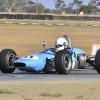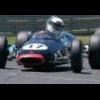I'm very interested in a history of some tuning Lotus TC engine at that time(60's).
This time, I'd like to ask you about Lotus TC engine tuned by BRM.
The engine must be first appear in 1964 for Racing Lotus Cortina or Racing Lotus Elan 26R.
(In 1963, Racing Lotus Cortina or Racing Lotus Elan(26R) have used be COSWORTH one.)
We can see some photos of the engine from period magazine. The engine has original Lotus TC cam cover with their engine plate.
However it's always B/W photos. So my first question is the color.
Do you know a color of Lotus TC cam cover for BRM? Somebody said it was painted BRM orange or BRM green. Please let me know if you know about it.
I know COSWORTH one was standard Lotus TC color(blue:hanmertone finish) with their engine plate. Then the color was changed to
Red(hanmertone finish) with their engine plate.
Well I have a BRM Lotus TC cam cover, please have a look the photo.

Next my question is When the cam cover appear and which car for?
I think the cam cover never used for Racing Lotus Cortina MK1 or 26R maybe.
also BRM Elan too. Please tell me.
Kind regards,
Hiro
















































